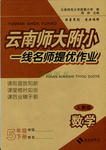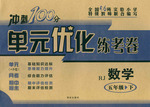题目内容
Mice fed junk food for nine months showed signs of developing the abnormal brain tangles strongly associated with Alzheimer's disease, a Swedish researcher said on Friday.
“On examining the brains of these mice, we found a chemical change not unlike that found in the Alzheimer brain,” Susanne Akterin, a researcher at the Karolinska Institutet's Alzheimer's Disease Research Center, who led the study, said in a statement.
“We now suspect that a high intake of fat and cholesterol (胆固醇) in combination with genetic factors ... can adversely affect several brain substances, which can be a contributory factor in the development of Alzheimer’s.”
Alzheimer’s disease is incurable and is the most common form of dementia (痴呆) among older people. It affects the regions of the brain involving thought, memory and language.
While the most advanced drugs have focused on removing clumps of βamyloid protein(β淀粉蛋白) that forms plaques in the brain, researchers are also now looking at therapies to address the toxic tangles caused by an abnormal build-up of the protein tau (T形蛋白).
In her research, Akterin focused on a gene variant (基因突变) called apoE4, found in 15 to 20 percent of people and which is a known risk factor for Alzheimer’s. The gene is involved in the transport of cholesterol.
She studied mice genetically engineered to imitate the effect of the variant gene in humans, and which were fed a diet rich in fat, sugar and cholesterol for nine months -- meals representing the nutritional content of fast food.
These mice showed chemical changes in their brains, indicating an abnormal build-up of the protein tau as well as signs that cholesterol in food reduced levels of another protein called Arc involved in memory storage, Akterin said.
“All in all, the results give some indication of how Alzheimer's can be prevented, but more research in this field needs to be done before proper advice can be passed on to the general public,” she said.
61. What did Susanne Akterin find in her research?
A. Signs of developing the abnormal brain disorders.
B. The abnormal brain disorders because of junk food.
C. Akterin’s disease linked with junk food.
D. The same chemical change in the Alzheimer brain.
62. What is Susanne Akterin’s idea about Alzheimer’s disease?
A. She thinks it’s caused by fat and cholesterol (胆固醇) with genetic factors.
B. She doesn’t believe that it’s caused by fat and cholesterol (胆固醇) with genetic factors.
C. She doubts whether it’s caused by fat and cholesterol (胆固醇) with genetic factors.
D. She believes junk food causes mice to be abnormal.
63. Which is NOT the sign of dementia among older people?
A. Often forgetting things B. Often repeating the same words.
C. Often being weak D. Unable to understand other people.
64. Which of the following is true according to the passage?
A. It’s easy to cure Alzheimer’s disease.
B. There’s no way to cure Alzheimer’s disease.
C. Akterin has found Alzheimer’s disease.
D. Akterin removedβamyloid protein (β淀粉蛋白).
65. What does Akterin’s experiment tell us?
A. Alzheimer’s disease can be avoided.
B. Alzheimer’s disease is incurable.
C. Alzheimer’s disease can be cured.
D. Mice are the same as humans.
DACBA

 云南师大附小一线名师提优作业系列答案
云南师大附小一线名师提优作业系列答案 冲刺100分单元优化练考卷系列答案
冲刺100分单元优化练考卷系列答案A purple tomato genetically engineered to contain nutrients more commonly seen in dark berries helped cancer in mice, British researchers said on Sunday. The finding, published in the journal Nature Biotechnology, bolsters the idea that plants can be genetically modified(changed) to make people healthier.
Cancer-prone mice fed the modified fruit lived significantly longer than animals fed a standard diet with and without regular tomatoes, Cathie Martin and colleagues at
the government-funded John Innes Center in Britain reported. “The effect was much bigger than we had expected.” said Martin, a plant biologist.
The study focused on anthocyanins,a type of antioxidant found in berries such as blackberries and blackcurrants that have been shown to lower risk of cancer, heart diseases and some neurological diseases. While an easy way to improve health, many people don’t eat enough of these fruits, the researchers said. Using genes from the snapdragon flower, the researchers discovered they could get the tomatoes to make anthocyanins---- turning the tomato purple in the process.
Mice genetically engineered to develop cancer lived an average of 182 days when they were fed the purple tomatoes, compared to 142 days for animals on the standard diet. “It is greatly encouraging to believe that by changing diet, or specific components in the diet. You can improve health in animals and possibly humans.” Martin said in a telephone interview.
The researchers warned that trials in humans are a long way off and the next step is to investigate( look into) how the antioxidants actually affect the tumors to promote better health. But the findings do support the formal research suggesting that people can significantly improve their health by making simple changes to the daily diet, other researchers said.
“It’s exciting to see new techniques that could potentially make healthy foods even better for us.” said Doctor Lara Bennett, science information office at Cancer Research UK. “ But it is too early to say whether anthocyanins obtained through diet could help to reduce the risk of cancer.”
【小题1】The text mainly tells us _________.
| A.what can prevent people from having cancer. |
| B.Scientists have developed cancer- fighting tomato. |
| C.ways to live much longer have been found by scientists. |
| D.genetically engineered food is good for people’s health. |
| A.change | B.reduce | C.support | D.test |
| A.Blackberries and blackcurrants can lower risk of cancer. |
| B.The anthocyanins can make the purple tomatoes grow stronger. |
| C.Genes from snapdragon flowers can be put into common tomatoes. |
| D.Mice fed the modified fruit lived longer than the common ones. |
| A.are not certain now. |
| B.have been proved |
| C.are very harmful |
| D.are hard to be tested |
A purple tomato genetically engineered to contain nutrients more commonly seen in dark berries helped cancer in mice, British researchers said on Sunday. The finding, published in the journal Nature Biotechnology, bolsters the idea that plants can be genetically modified(changed) to make people healthier.
Cancer-prone mice fed the modified fruit lived significantly longer than animals fed a standard diet with and without regular tomatoes, Cathie Martin and colleagues at
the government-funded John Innes Center in Britain reported. “The effect was much bigger than we had expected.” said Martin, a plant biologist.
The study focused on anthocyanins,a type of antioxidant found in berries such as blackberries and blackcurrants that have been shown to lower risk of cancer, heart diseases and some neurological diseases. While an easy way to improve health, many people don’t eat enough of these fruits, the researchers said. Using genes from the snapdragon flower, the researchers discovered they could get the tomatoes to make anthocyanins---- turning the tomato purple in the process.
Mice genetically engineered to develop cancer lived an average of 182 days when they were fed the purple tomatoes, compared to 142 days for animals on the standard diet. “It is greatly encouraging to believe that by changing diet, or specific components in the diet. You can improve health in animals and possibly humans.” Martin said in a telephone interview.
The researchers warned that trials in humans are a long way off and the next step is to investigate( look into) how the antioxidants actually affect the tumors to promote better health. But the findings do support the formal research suggesting that people can significantly improve their health by making simple changes to the daily diet, other researchers said.
“It’s exciting to see new techniques that could potentially make healthy foods even better for us.” said Doctor Lara Bennett, science information office at Cancer Research UK. “ But it is too early to say whether anthocyanins obtained through diet could help to reduce the risk of cancer.”
1.The text mainly tells us _________.
|
A.what can prevent people from having cancer. |
|
B.Scientists have developed cancer- fighting tomato. |
|
C.ways to live much longer have been found by scientists. |
|
D.genetically engineered food is good for people’s health. |
2.In the first paragraph the underlined word “ bolster” probably means _______
|
A.change |
B.reduce |
C.support |
D.test |
3.Which of the following was NOT the result found in the study?
|
A.Blackberries and blackcurrants can lower risk of cancer. |
|
B.The anthocyanins can make the purple tomatoes grow stronger. |
|
C.Genes from snapdragon flowers can be put into common tomatoes. |
|
D.Mice fed the modified fruit lived longer than the common ones. |
4.According to Dr. Lara Bennett, the effects of anthocyanins through diet on human being________
|
A.are not certain now. |
|
B.have been proved |
|
C.are very harmful |
|
D.are hard to be tested |
The findings come ___36___ a study of nearly 1,000 US people that looked at diet, calorie intake and body mass index (BMI) - a measure of obesity.___37___ is found that those who ate chocolate a few times a week were, on ___38___, slimmer than those ___39___ ate it occasionally. Even though chocolate is loaded with calories, it contains ingredients(材料)that may favour weight loss ___40___ than fat synthesis, scientists believe.___41___ boosting calorie intake, regular chocolate consumption was related to lower BMI in the study, ___42___ is published in Archives of Internal Medicine. The link remained even when other factors, like how ___43___ exercise individuals did, were taken into ___44___.And it appears it is how often you eat chocolate that is important, rather than how much of it you eat. The ___45___ found no link with quantity consumed.
___46___ to the researchers, there is only one chance in a hundred that their findings could be explained by chance alone. Lead author Dr Beatrice Golomb, from the University of California at San Diego, said: "Our findings appear to add to a body of information suggesting that the composition of calories, not just the number of them, matters for determining their ultimate impact on weight."This is not the first time scientists ___47___ that chocolate may be healthy for us. Other studies have claimed chocolate may be good for the heart. Consumption of certain types of chocolate has been linked to some favourable changes in blood pressure, insulin(胰岛素)sensitivity and cholesterol(胆固醇)level. And chocolate, ___48___ dark chocolate, does contain antioxidants(抗氧化剂)which can help to mop up harmful free radicals - unstable chemicals that can damage our cells.
Dr Golomb and her team believe that antioxidant compounds, called catechins(儿茶素), can improve lean muscle mass and reduce weight ___49___ studies in rodents would suggest this might be so. Mice ___50___ for 15 days with epicatechin (present in dark chocolate) had improved exercise performance and observable changes to their muscle composition.They say clinical trials are now needed in humans to see ___51___ this is the case.
But before you reach ___52___ a chocolate bar, there are still lots of unanswered questions. And in the absence of conclusive evidence, experts advise caution.While there's no harm in allowing yourself a treat like ___53___ now and again, eating too much might be harmful because it often ___54___ a lot of sugar and fat too.And if you are looking to change your diet, you are ___55___ to benefit most from eating more fresh fruits and vegetables.
|
1. |
|
|
2. |
|
|
3. |
|
|
4. |
|
|
5. |
|
|
6. |
|
|
7. |
|
|
8. |
|
|
9. |
|
|
10. |
|
|
11. |
|
|
12. |
|
|
13. |
|
|
14. |
|
|
15. |
|
|
16. |
|
|
17. |
|
|
18. |
|
|
19. |
|
|
20. |
|